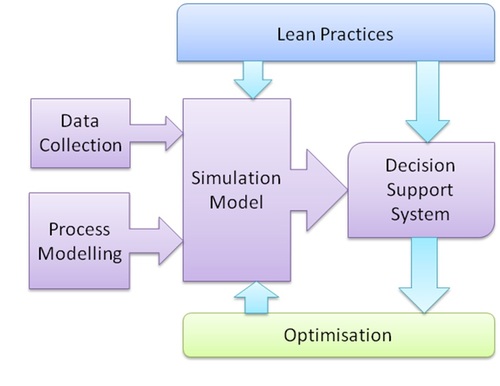Projects
Objectives:
• Assess the impact of different scenarios and plans on wards performance before implementing any strategies or schedules.
• Capitalise on resource utilisation in order to avoid burn-out level for staff while maximising productivity and efficiency to the patients’ benefit.
• Communicate and gain insights into strategic initiatives, key objectives, and actions.
• Capitalise on resource utilisation in order to avoid burn-out level for staff while maximising productivity and efficiency to the patients’ benefit.
• Communicate and gain insights into strategic initiatives, key objectives, and actions.
Description:
In the context of growing attention for ‘healing environments’ and ‘evidence based design’ an increasing number of hospitals have decided to provide single-bedded rooms. Articles have addressed the issue from the perspective of privacy and dignity, patient satisfaction with care, noise and quality of sleep, hospital infection rates, recovery rates, and patient safety issues. Research of these articles showed a potential to achieve valuable enhancements in the quality of the healing environment. Reports and published articles stated that single bedded wards compared more favourably than open wards in all areas of evaluation, hence the demand for single bedded wards is expected to increase in the coming years. Statistics showed that when given the choice, approximately half of patients would prefer a single room and also patients treated in single rooms were more satisfied with their care than those treated in multiple-bed wards. Patients perceive significantly less auditory and visual privacy in emergency department treatment areas with curtains compared with a room with walls. With respect to hospital infection rates, there exists a significant positive correlation between new cases of MRSA infections and high levels of ward occupancy. However, the investigation shows that there has been little focus on the impact of resource utilisation when using a single bedded approach. The project plan is to build a simulation-based assessment model. The development of the model will begin with modelling the current wards system “as is” which means mimicking the current wards situation. In order to do so, data needs to be collected regarding the wards and the consumption of resources within the wards. All processes, clinical and non-clinical, will be mapped ‘as is’. All processes that have an interaction at ward level will be mapped. This collected data will be mainly used in ward analysis, process mapping, and ultimately to develop a simulation model. A comparative analysis of single-bedded ward vs. ordinary wards may then be conducted. Decision makers will be in a position to examine their strategies before implementing them. The key performance indicators can also be set for the optimisation phase. The model will provide an animation option that helps to visually understand the system dynamics and its impact on performance.
Design:
Members:
• Waleed Abo-Hamad
• John Crowe
• John Crowe



